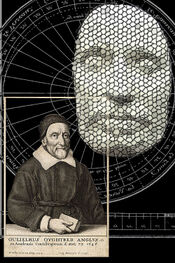Template:Are You Sure/January 30: Difference between revisions
No edit summary |
No edit summary |
||
| Line 1: | Line 1: | ||
[[File:William_Oughtred_computes_the_death_mask_of_Oliver_Cromwell.jpg|thumb|175px|link=William Oughtred (nonfiction)|Mathematician and crime-fighter [[William Oughtred (nonfiction)|William Oughtred]] computes the death-mask of [[Oliver Cromwell (nonfiction)|Oliver Cromwell]] in preparation for the trial of Cromwell's corpse.]] | [[File:William_Oughtred_computes_the_death_mask_of_Oliver_Cromwell.jpg|thumb|175px|link=William Oughtred (nonfiction)|Mathematician and crime-fighter [[William Oughtred (nonfiction)|William Oughtred]] computes the death-mask of [[Oliver Cromwell (nonfiction)|Oliver Cromwell]] in preparation for the trial of Cromwell's corpse.]] | ||
• ... that a '''[[Flow Chart (nonfiction)|flowchart]]''' is a type of diagram that represents a step-by-step approach to solving a task, with the steps represented as boxes of various kinds, and their order by connecting the boxes with arrows?<br> | • ... that a '''[[Flow Chart (nonfiction)|flowchart]]''' is a type of diagram that represents a step-by-step approach to solving a task, with the steps represented as boxes of various kinds, and their order by connecting the boxes with arrows?<br> | ||
• ... that inventor and engineer '''[[James Watt (nonfiction)|James Watt]]''' realized that contemporary engine designs wasted a great deal of energy by repeatedly cooling and reheating the cylinder, and that he consequently invented the separate condenser, which avoided this waste of energy and radically improved the power, efficiency, and cost-effectiveness of steam engines? | • ... that inventor and engineer '''[[James Watt (nonfiction)|James Watt]]''' realized that contemporary engine designs wasted a great deal of energy by repeatedly cooling and reheating the cylinder, and that he consequently invented the separate condenser, which avoided this waste of energy and radically improved the power, efficiency, and cost-effectiveness of steam engines?<br> | ||
• ... that artist '''[[Gil Kane (nonfiction)|Gil Kane]]''' pioneered the [[Graphic novel (nonfiction)|graphic novel]] with his books ''His Name is...Savage'' (1968) and ''Blackmark'' (1971)?<br> | • ... that artist '''[[Gil Kane (nonfiction)|Gil Kane]]''' pioneered the [[Graphic novel (nonfiction)|graphic novel]] with his books ''His Name is...Savage'' (1968) and ''Blackmark'' (1971)?<br> | ||
• ... that the corpse of '''[[Oliver Cromwell (nonfiction)|Oliver Cromwell]]''' was ritually executed more than two years after his death, on the 12th anniversary of the execution of the monarch he himself deposed? | • ... that the corpse of '''[[Oliver Cromwell (nonfiction)|Oliver Cromwell]]''' was ritually executed more than two years after his death, on the 12th anniversary of the execution of the monarch he himself deposed? | ||
Revision as of 20:19, 30 January 2020

• ... that a flowchart is a type of diagram that represents a step-by-step approach to solving a task, with the steps represented as boxes of various kinds, and their order by connecting the boxes with arrows?
• ... that inventor and engineer James Watt realized that contemporary engine designs wasted a great deal of energy by repeatedly cooling and reheating the cylinder, and that he consequently invented the separate condenser, which avoided this waste of energy and radically improved the power, efficiency, and cost-effectiveness of steam engines?
• ... that artist Gil Kane pioneered the graphic novel with his books His Name is...Savage (1968) and Blackmark (1971)?
• ... that the corpse of Oliver Cromwell was ritually executed more than two years after his death, on the 12th anniversary of the execution of the monarch he himself deposed?